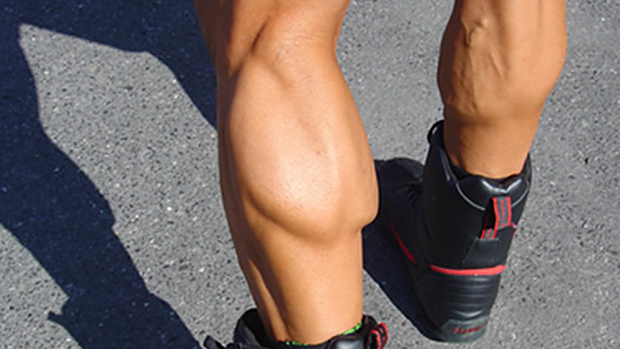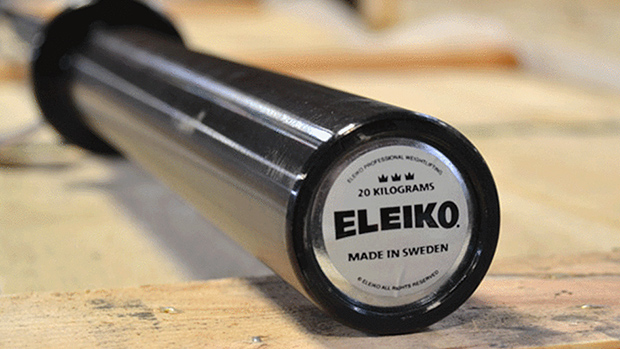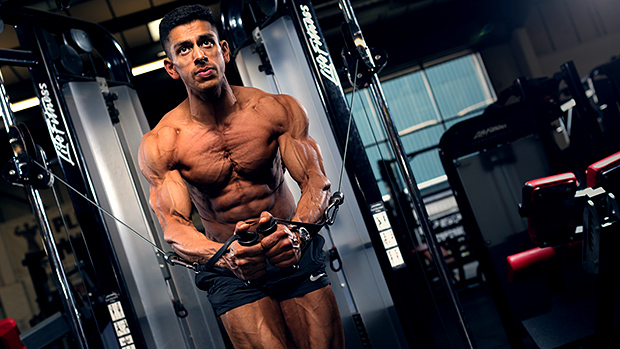Q: I've searched your site and haven't really found anything about how to train shoulders. Any tips or suggestions?
A: Throughout the years, strength athletes and bodybuilders have used both high loads and high volumes to build round, powerful shoulders. On one hand, powerlifters and Olympic lifters have built impressive shoulders using low reps for multiple sets on compound exercises such as presses and upright rows. On the other hand, there are plenty of bodybuilders out there with fantastic deltoid development who have used high reps, short rest intervals, and mainly isolation type movements. Personally, I'm of the opinion that people will achieve better deltoid development if both approaches are cycled in and out.
I've also found that descending sets and the pre-exhaustion method are particularly effective at promoting shoulder growth. I guess it's clear by now that I'm advocating that you expose the shoulders to a wide variety of training stimuli. You may want to experiment with low-rep, multiple compound set exercises for a short period (around six workouts), and then switch to higher rep, isolation type exercises for an equally short phase.
Here, however, is a sample routine you may want to try. It employs high-volume and shifting-torque curves:
- One-arm dumbbell lateral raises (6-8 reps on a 3021 tempo)
- Rest 10 seconds.
- Incline bench lateral raises (10-12 reps on a 3010 tempo)
- Rest 10 seconds.
- One arm cable lateral raises (12-15 reps on a 2010 tempo)
- Cry out in pain and curse the gods.
Repeat steps one through six with the other arm. Rest two minutes and do the entire tri-set two more times.
Q: My wrists hurt when I do upright rows. Is there some way I can do the exercise to stop the pain?
A: There are three things you can do to alleviate the stress on the wrists when doing upright rows:
- Use an EZ-curl bar and grip the bar where you might normally grip it if you were doing curls (the angle on the bar will permit pain free movement).
- Use a rope with the bulky rubber ends (the one normally used for triceps pressdowns).
- If using a conventional barbell, don't lift the bar past the clavicles.
Q: I'm a black belt in karate and I can bench 200 pounds. Is that good?
A: Which hand?
On a more serious note, if you're a devotee of full contact karate, a 200-pound bench press is good only if you weigh 130 pounds or less.
Q: I was hoping you could tell me what would be better for muscle growth. In the past I have worked each muscle group twice a week. For example:
- Monday and Thursday: Chest, tris
- Tuesday and Friday: Back, bis
- Wednesday and Saturday: Shoulders, legs
I was wondering, would I get the same effect working each muscle group once a week? What if I were to work chest and tris on Monday, back and biceps on Wednesday, and shoulders and legs on Friday?
A: You're using way too much volume and too high a frequency. Your best bet would be to use one of the following splits (the one you select should be influenced by factors such as recovery ability, strong and weak points, time schedule, gym opening hours, etc.):
Split Option A
- Day 1: Chest and back
- Day 2: Legs and abs
- Day 3: Off
- Day 4: Shoulders and arms
- Day 5: Off
Split Option B
- Day 1: Back and triceps
- Day 2: Upper thighs and abs
- Day 3: Off
- Day 4: Chest and biceps
- Day 5: Shoulders and calves
- Day 6: Off
Split Option C
- Day 1: Hamstrings and calves
- Day 2: Back and shoulders
- Day 3: Off
- Day 4: Quads and calves
- Day 5: Chest and arms
- Day 6: Off
Split Option D
- Day 1: Back and calves
- Day 2: Chest
- Day 3: Hamstrings and abs
- Day 4: Shoulders and arms
- Day 5: Quadriceps and calves
- Day 6: Off
- Day 7: Off
Q: Where do you get the 35-pound tubs of carb powders that you wrote about in your book, "The Poliquin Principles"?
A: Contact Pro-Circuit Nutrition at 1-800-565-2639.
Q: What's the best way to perform bent-over barbell rows? Dorian Yates says he uses an angle of approximately 70 degrees, while other people say a steeper angle (30 degrees or thereabouts) is better. What's your opinion?
A: Both camps are right. Varying the angle changes the line of pull, thus affecting muscle recruitment. Vary the angle often. If you need proof, just look at the impressive back development of judokas, grapplers, and gymnasts, who all routinely use a multitude of angles in their sports.
Q: Should traps be trained on back day or on shoulder day?
A: It depends on which split routine you use. If you need to get into a shoulder specialization program, you'll have to cut back on the amount of work devoted to other body parts, particularly the chest muscles. This is because all chest work recruits the anterior deltoid.
If your traps are definitely a weakness, they should be trained first in a training session, and the best way to train them is by using the power clean and shrugs (using a variety of implements such as barbells, dumbbells, and low pulleys).
Interestingly enough, when a trainee has a hard time increasing his or her curling poundages, employing a trap specialization program can often bring about an increase in the strength of their elbow flexors. One way to tell if your arms will benefit from a trap program is by the way the trainee carries his head. If he carries it forward, as if he were looking for loose change on the ground, he should definitely start giving the traps some extra work.
Q: I was thinking of doing some lateral-motion training for aerobic conditioning. Can you recommend a good slide board product?
A: I can't recommend a good slide board product because I don't like them. I think they're harmful to the knees. The damage might not surface immediately, but like developing a dental cavity, it'll take time, and once you perceive the damage, it'll be too late.
A few years ago, I lectured at the International Skating Union. John McCall, one of the best orthopedic surgeons in the business and physician for several Olympic and World Championships teams concurred with my opinion on how they help to trash the knees. Those devices have a breaking system at the lateral aspect of the foot to prevent you from coming off the board, which in turn creates unwanted torque on the lateral aspect of the knee.
Additionally, a Finnish coach present at the lectures did his Masters degree thesis on the various dryland skating drills/devices. Using telemetric EMG technology, he showed that the slide board has the least transfer to the actual skating stride.
My best advice is to invest in a pair of in-line skates. They're cheaper and safer.





